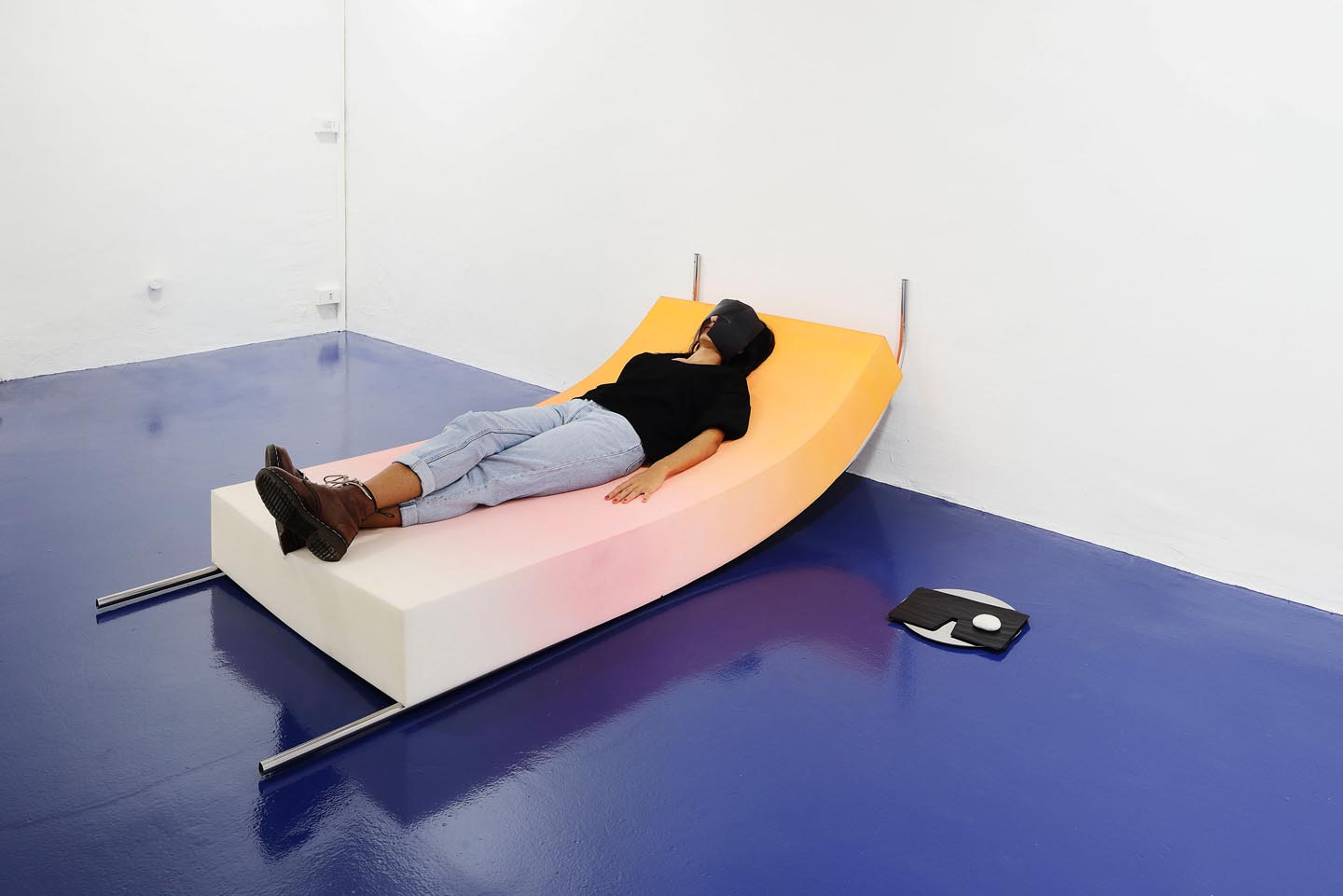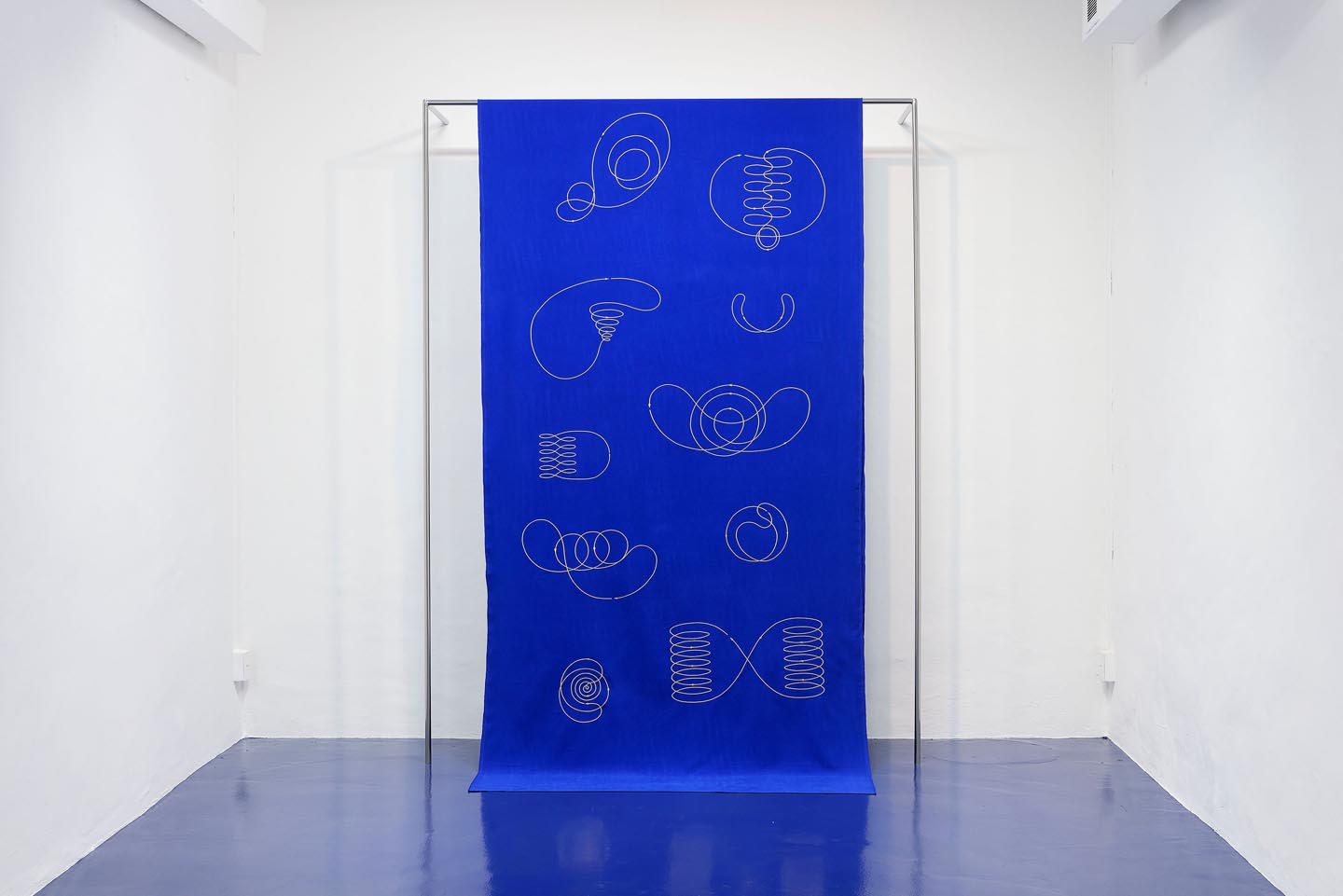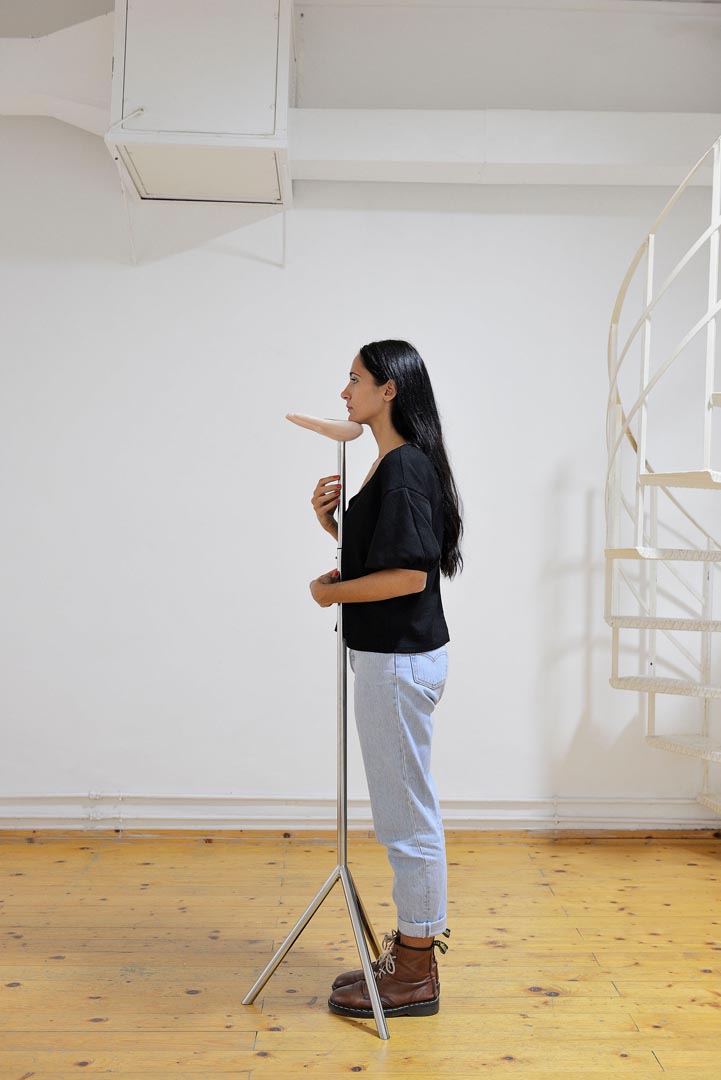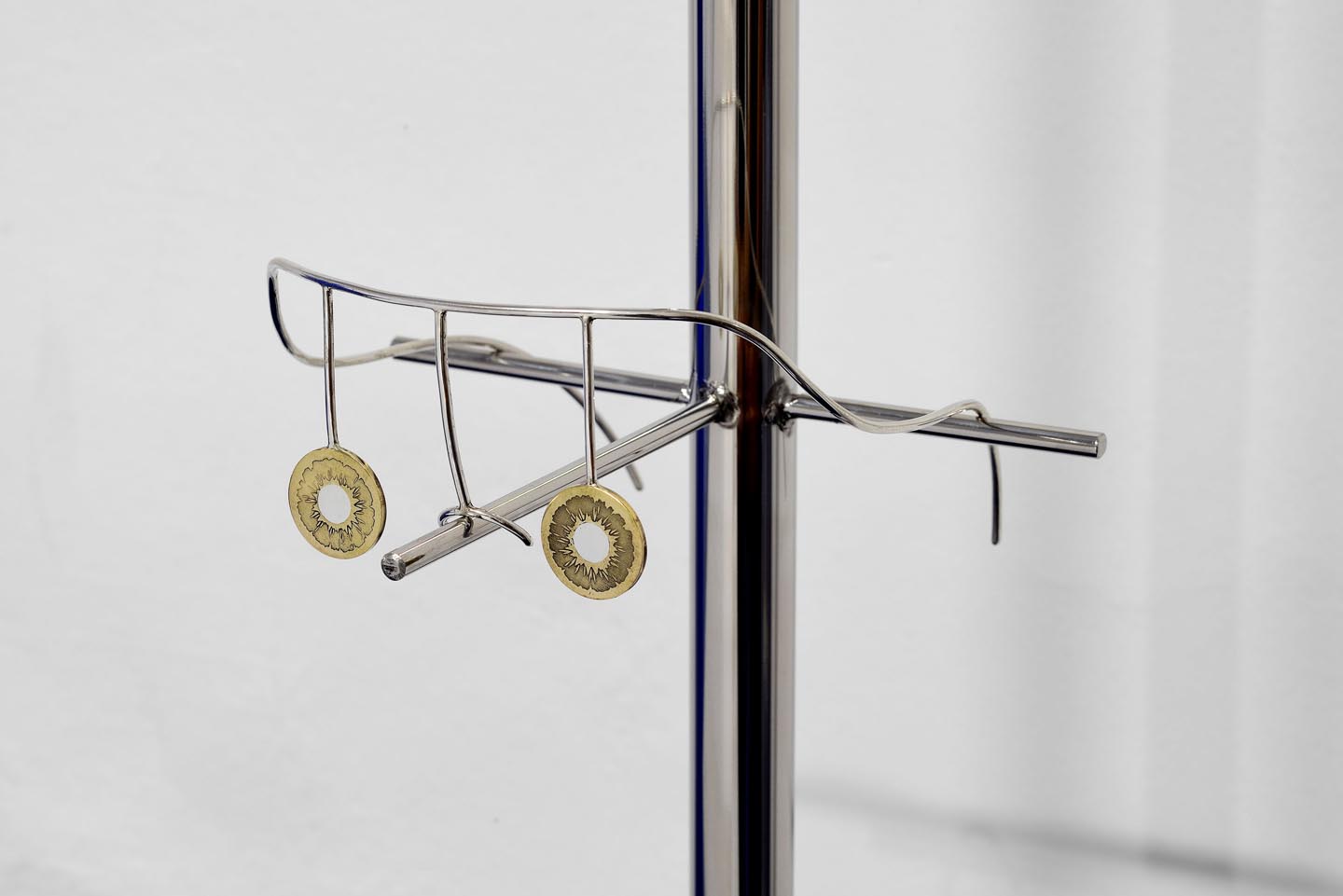Antonio Della Guardia develops an investigation into the impact of contemporary forms of work on the body, on cognitive processes and on the most intimate spheres of our private life, identifying their signs and, at the same time, imagining poetic forms and strategies of shared emancipation. In his work, the celebration of the worker’s body and fatigue, which is often inscribed in a proud Southern Italian identity, transcends geographical boundaries, becoming a symbol of wider transnational struggles and demands. The careful identification of rarely intelligible disciplinary devices, which the artist filters through a constant reduction of forms, gives life to a body of works that appear to the public as small repositories of emancipatory energy.

This inclination towards the analysis of contemporary work has led Della Guardia to focus his attention on the complex relation that exists between body, eyesight, cognitive processes and digital work. It is through this research that the artist encountered the studies of William Horatio Bates (1860-1931), a North American physician known for the development of a method to retrain eyesight without the use of glasses. If the Bates method has been subjected to fierce criticism by the scientific community, which has refuted its effective therapeutic validity, its strong imaginative charge has turned it into an object of worship for unorthodox scholars of perception, such as Aldous Huxley whose book The Art of Seeing (1942) was written in homage to this method.

Almost a remnant of twentieth-century scientific research, the Bates method represents for the artist a repertoire of possible performative practices, which he freely picks out and transfigures, crystallizing them within sculptural and installation devices that he then meticulously arranges in the exhibition space. In their encounter with the visitor, each of these devices is transformed into a tool designed to stimulate dormant processes, both of the gaze and of the imagination.

A pink marble hand, suspended at chin height, welcomes visitors as if to gently remind them of a more human posture, with the head raised and the gaze averted towards the distance. By breaking the flow of central vision, an eyeglasses-shaped sculpture prompts viewers to explore their peripheral vision, as if to regain possession of a progressively forgotten function of the body. Another pair of glasses, made of carbon paper and to be worn over closed eyes while comfortably lying down, allows one, in the artist’s words, «to project onto the world the processes of imagination». Finally, enveloping the field of vision, a large blue velvet drape allows a glimpse of slender drawings in gold thread that reproduce flight patterns of insects and birds: a subtle game in which the vision with closed eyes and the transfigured representation of animal reality mutually exchange parts.

The union between these and other devices results in an environment, an open training ground for the imagination, that visitors are invited to experience slowly and in solitude. Here the artist forgoes the representation of the body, a recurrent motif in his work, giving way to the living presence of the visitor who lingers and wanders in the space. Through this place of paradoxical functionality, Antonio Della Guardia attempts for a moment to divert our cognitive energies, pointing to interruption and flight as cultural techniques of survival. Per un Prossimo Reale celebrates the poetry of deceleration, of minimal forms and gestures, offering a space to experience the potential, regenerative qualities of the simplest processes of the human imagination.
Vasco Forconi
images (all) Antonio Della Guardia, «Per un Prossimo Reale», 2021,exhibition view, Pastificio Cerere Foundation, Rome. Photo: Roberto Apa.
Antonino della Guardia. Per un prossimo reale, curated by Vasco Forconi, Pastificio Cerere Foundation, Rome, 22.09 – 18.12.2021
The text by Vasco Forconi is the one that accompanies Antonio della Guardia’s exhibition at Pastificio Cerere









































